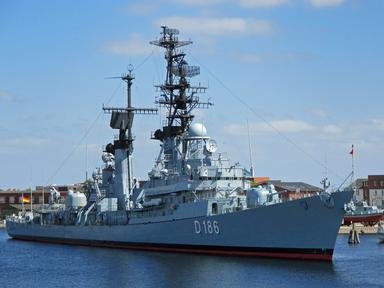Quiz Answer Key and Fun Facts
1. Designated as scout cruisers when completed, this class of three ships were the first to be called light cruisers by the U.S. Navy and numbered under the new system, "CL" for a light cruiser and "CA" for a heavy unit. Can you name the class?
2. This cruiser, a unit of the "Arethusa" class built for the British Royal Navy in 1913, was transferred to Canada in 1920. Can you name her?
3. The British "Arethusa" class ships were built between 1912 and 1915. Serving throughout World War I, how many ships were in the class?
4. The "Admiral Nakhimov" class of four ships were laid down by Imperial Russia in 1914, but were only finished by the Soviet government after the Revolution. How many of the ships were completed?
5. The British "C" class ships, built between 1914-1919, comprised 28 ships built in seven groups. How many of these vessels served in World War II?
6. Originally designed as the Imperial Russian ship "Svetlana", the "Krasny Krym" was the only one of the eight planned ships to be completed as a cruiser. Five others were never finished. What kind of ships were the last two completed as?
7. The Japanese "Tenryu" class of 1917 was projected to number eight ships, but the design was considered too small and only two ships were built. What was their main armament?
8. Larger and better armed that the "Tenryu" class, the Japanese "Kuma" class comprised five ships built between 1917-1921. How many of them survived World War II?
9. This class of American light cruisers, the "Omaha" class, were the last ones designed before the Washington Treaty. How many of them were built?
10. The British "Danae" or "D" class ships, built between 1918-1922, were slightly larger versions of the "C" class ships. During World War II, two of the eight ships served with which foreign, non-Commonwealth navy?
Source: Author
Reamar42
This quiz was reviewed by FunTrivia editor
stedman before going online.
Any errors found in FunTrivia content are routinely corrected through our feedback system.
